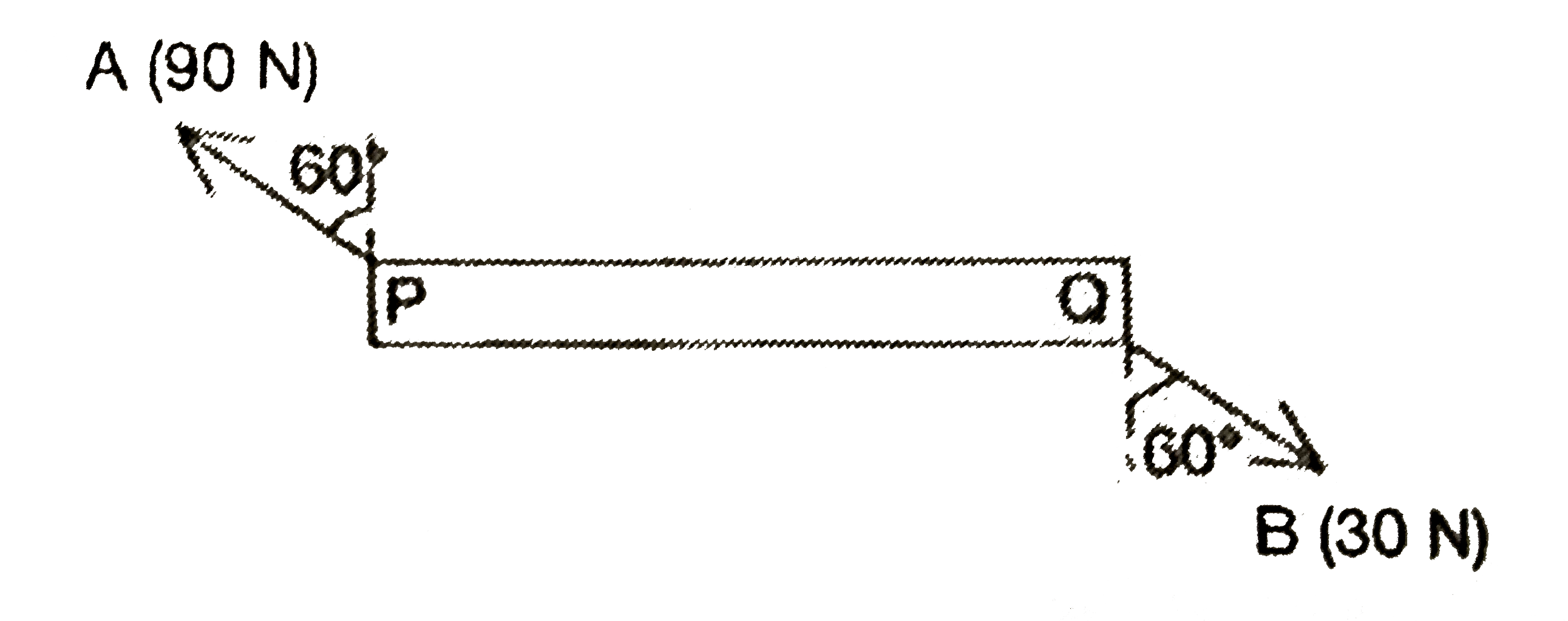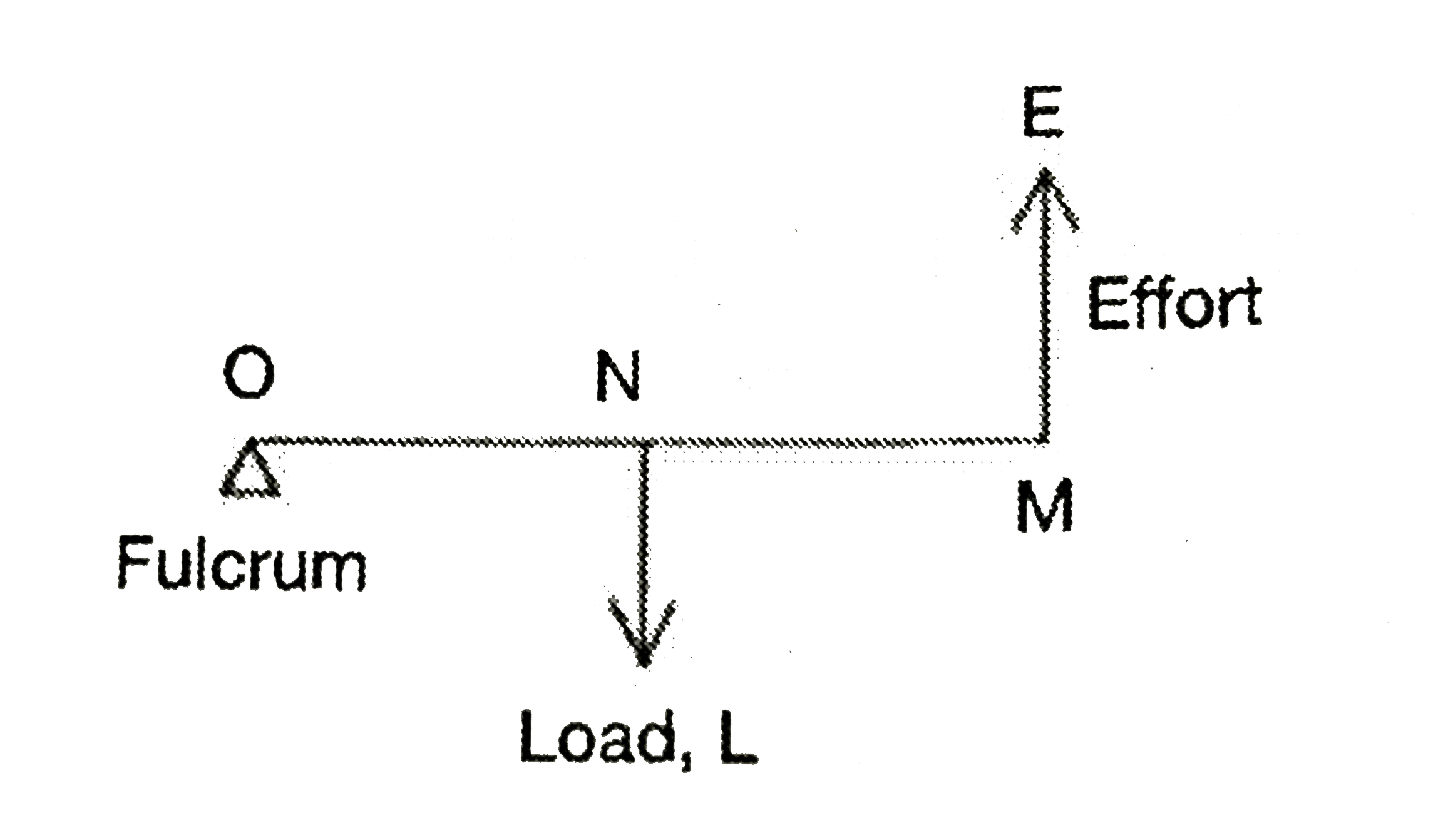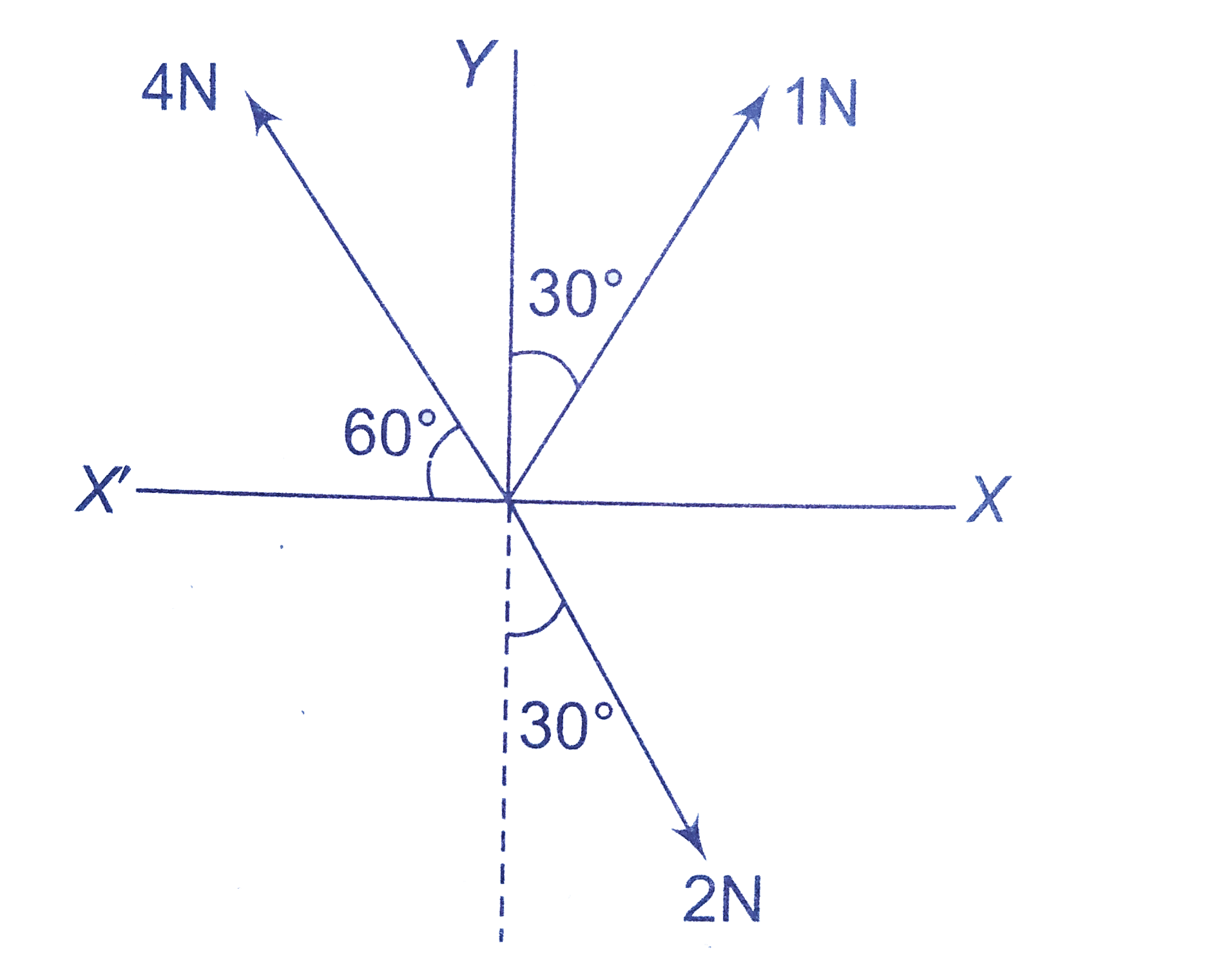A uniform metallic rod AB of length 1.4 m is lifted by two forces P and Q acting along the directions as shown in the figure. If the magnitudes of P and Q are 20 N and 50 N, respectively, find the magnitude and the position of the resultant normal force that acts on the rod.

The component of P along normal to AB at A = 20 = 10 N
The component of Q normal to AB at B = 50 cos = 25 N. Thus, the given situation is similar to that shown in the figure.

Now applying the principle of moments, we get
and magnitude of

Topper's Solved these Questions
- BOOK - PEARSON IIT JEE FOUNDATIONCHAPTER - SIMPLE MACHINESEXERCISE - Level- 310videos
SIMPLE MACHINES
- BOOK - PEARSON IIT JEE FOUNDATIONCHAPTER - SIMPLE MACHINESEXERCISE - Concept Application (Level - 1 )44videos
SIMPLE MACHINES
- BOOK - PEARSON IIT JEE FOUNDATIONCHAPTER - MODERN PHYSICSEXERCISE - Level 35videos
MODERN PHYSICS
- BOOK - PEARSON IIT JEE FOUNDATIONCHAPTER - WAVES MOTION AND SOUND EXERCISE - Level 310videos
WAVES MOTION AND SOUND
Similar Questions
A uniform metallic rod PQ of length 2 m is acted upon by two forces A and B along the directions as shown in the figure. Find the magnitude and position of the resultant normal force that acts on the rod.
 View Solution
View SolutionThe maximum and minimum magnitudes of the resultant of two forces are 5 N and 5N respectively. Find the magnitude of resultant force when act orthogonally to each other.
View Solution
Knowledge Check
- Question 1 - Select One
If two forces of 5 N each are acting along X and Y axes, then the magnitude and direction of resultant is
A5√2,π/3B5√2,π/4C−5√2,π/3D−5√2,π/4 - Question 2 - Select One
Two forces of magnitude 8 N and 15 N respectively act at a point . If the resultant force is 17 N , the angle between the forces has to be
A60∘B45∘C90∘D30∘ - Question 3 - Select One
Three forces are acting on a particle as shown in the figure. To have the resultant force only along the Y-direction, the magnitude of the maximum additional force needed is
 A0.866NB1.732NC0.5ND4N
A0.866NB1.732NC0.5ND4N
Two forces of equal magnitude F act on two isolated bodies P and Q as shown in the figure. The mass of body Q is three times that of body P. The magnitude of the acceleration of P is
 View Solution
View SolutionTwo parallel unlike forces of magnitudes 15 N and 10 N are acting at point A and B respectively. If C is the point of action of resultant, then AB/BC is
View SolutionTwo parallel unlike forces of magnitudes 15 N and 10 N are acting at point A and B respectively. If C is the point of action of resultant, then AB/BC is
View SolutionThe forces each of 20N act on a body at 120∘ The magnitude and direction of resultant is
View SolutionTwo like parallel force 20 N and 30 N act at the ands A and B of a rod 1.5 m long. The resultant of the forces will act at the point
View Solution
